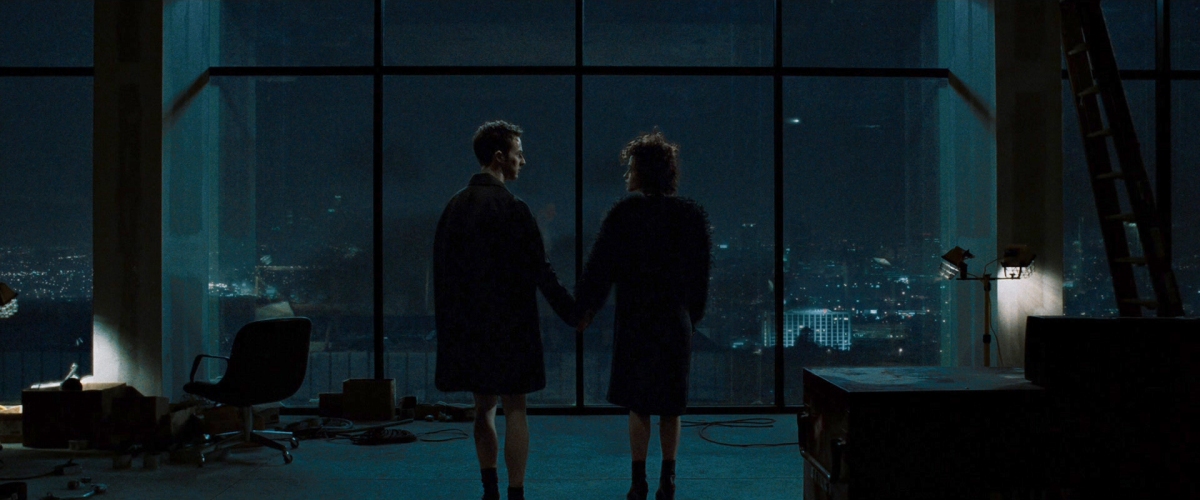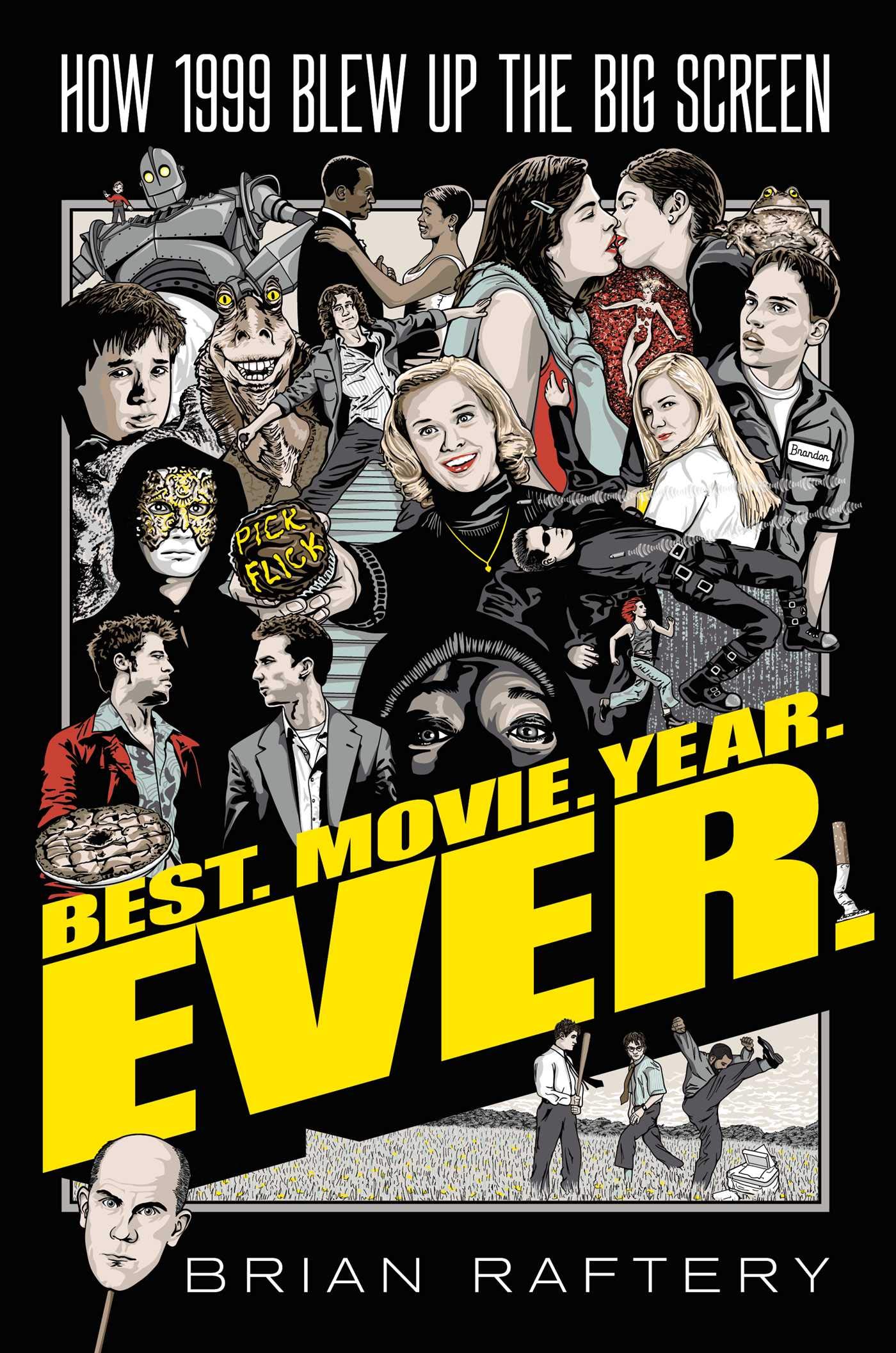Fight Club At Twenty.
Ray Pride
October 31, 2019
Newcity Film, Newcity
“Fight Club” is twenty years old. In the decades since its release, box-office disappointment and reinvention through myriad DVD and Blu-ray releases (thirteen million DVDs by 2014), Brad Pitt established himself as a productive, adventurous film producer, with his Plan B productions involved with this summer’s “Ad Astra,” but also award-winning work like “Moonlight,” “Killing Them Softly,” “Tree of Life,” “Twelve Years A Slave,” “Okja” and “The Last Black Man In San Francisco.” Edward Norton, who has moved away from acting, directed and stars in his own adaptation of Jonathan Lethem’s 1999 novel, “Motherless Brooklyn” in November.
The world had not yet seen, or reacted, to David Fincher’s film at the time of this bantering interview with Pitt and Norton. (A review that includes my contemporaneous interview with Palahniuk is here.)
August 1999:
“Fight Club” is a ride, a sneaky mindfuck of a movie, and a thunderous journey into the darkest parts of one man’s mind. Within a few dozen seconds, we rush through someone’s brain and out onto a rooftop where another character holds a gun in his mouth. The ride begins.
Brad Pitt plays Tyler Durden, a trickster character who insurance agency flunky Edward Norton meets at a time when he’s been wishing for someone who could push him over the edge. By night, Norton’s unnamed narrator trolls support groups for the grievously ill, pretending to have illnesses in order to sob. That’s where he meets fellow grief-ghoul Helena Bonham Carter. But that’s set-up. The impression is out there that “Fight Club” is about yuppies gathering in alleys to beat each other up. Uh-uh. There’s more to it.
Everyone’s stuck—in their jobs, their bodies or their heads. Except for Tyler, everyone’s a flunky, a waiter, a cop, solid blue-collar stock. “Fight Club” is one of the funniest, most piercing movies you’d hope for, a ferocious satire that builds on the madness of Chuck Palahniuk’s novel, and in its many richly detailed scenes, exceeds even what David Fincher accomplished in “Seven.”
When we talked, no one knew yet if “Fight Club” could be the first epic audience movie of the new millennium, or whether it would tank. Pitt, thirty-five, has a reputation as a reluctant interview, but after talking with him, it seems it may be more out of modesty than ego or fear. Norton, thirty, was his customary talkative self.
Does the actor Brad Pitt exist in the universe of “Fight Club”?
Pitt: [shaking his head] What does that mean, what does that mean, what does that mean?
There are in-jokes throughout the movie, marquees showing “Seven Years in Tibet,” “Wings of the Dove” and “Larry Flynt.” And Tyler tells the narrator at one point, “I’m what you want to be like.” If you ask guys what they want to be like, a typical guy would be happy to be you.
Norton: I thought that was a great perversion of Bradley’s baggage.
Pitt: Yeah. Perverting the baggage. That was dealing more with the projection and the image, y’know, that’s out there. Good and bad. Myself, I’ve certainly never felt a part of that.
You talk about good-looking guys in the movies, a few names come up: Mel Gibson, Brad Pitt…
Norton: Edward Norton.
Pitt: Edward Norton. You sexy fool!
Norton: He never hurts my feelings.
There’s a lot of yelling in the movie, it seems cathartic, especially in the bedroom scenes with Helena.
Pitt. [whispers] Sex. You look through the crack and you just see all these crazy gymnastics going. Doing gymnastics. Yeah, we’re just jumping on the bed.
You’ve worked with David Fincher before…
Pitt: He’s one of the guys leading the pack. There are a lot of interesting guys out there, who are pushing the medium, but I’ve said this before, I think Finch is picking up where Kubrick left off.
Norton: If anyone can do it, he can.
Pitt: This thing he created here is extraordinary. It’s beyond all our hopes and he always set out with an image of what this thing could be. This thing just roars.
Norton: I don’t feel like I’ve seen a film—
Pitt: It’s a monster.
Norton: —That’s that far out there in terms of its technique, its use of style to enhance the emotional themes of a narrative. When you work with Fincher, you slowly absorb that he is the complete filmmaker. He is the most comprehensive modern filmmaker. He has a complete command of all the tools that are available to a filmmaker now. He’s as good a DP as his DP, he’s as good at sound—
Pitt: —all his tweaking—
Norton: —his technical tweaking as the guys who work for him. He’s an excellent script doctor—
Pitt:—A storyteller.
Norton: He’ll even come in and give you a good line reading at times. And yet he’s dealing in f/stops. He knows more about CGI as anyone.
Pitt: And not only that, ideas. He takes whatever groundbreaking technology is available, like the Rolling Stones video in Central Park where they’re giants. There was this technique meant for something else, and Fincher goes, “Can’t I take this and actually make them people?” He’s inventive that way. But on a directorial level, this thing is one to be studied. There are so many things that are fine-tuned, from sound on. All the way from opening up coming out of a brain to the product placement. Any product placement you see, like Pepsi machines, it’s always put in a somewhat violent scene. It’s just these little, little comments that are more subliminal than anything.
Read the full interview












